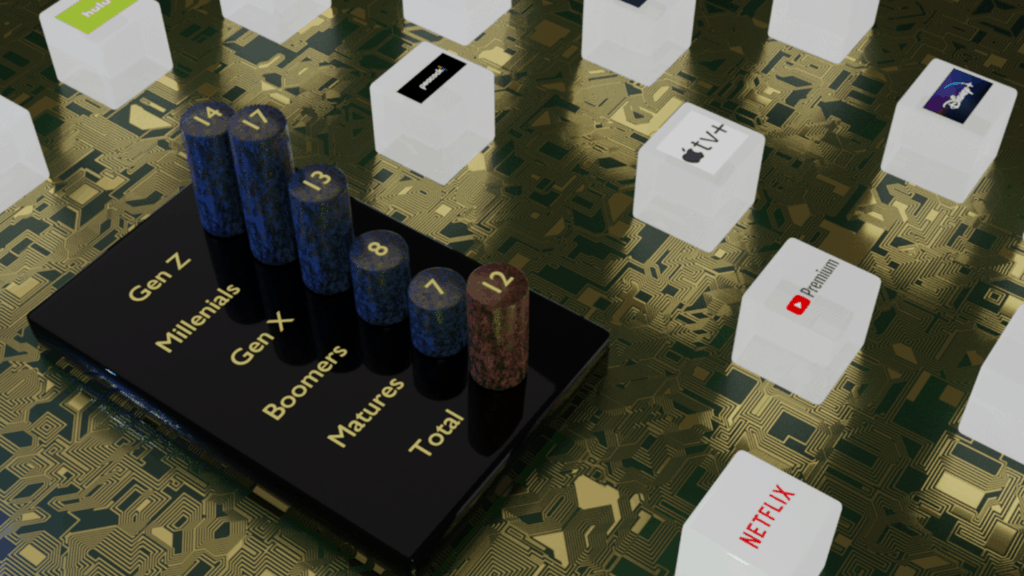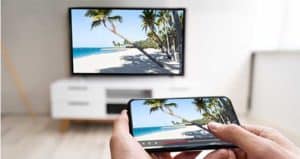Why Hotels Must Provide TV Casting
For a growing number of frequent travelers, television screens are a lot like pillows. If they could, your guests would love to bring their own television sets with them to make their hotel rooms more like home. Naturally, they can’t. While pillows can be vacuum-packed to fit inside a suitcase, I don’t believe a shrinkable, rollable or foldable 55-inch 4K TV has reached the market quite yet. So, guests have no choice but to settle for the in-room set provided by the hotel. And if their TV experience isn’t close to what they’re used to at home, you’re headed for headaches.
Why TV Casting?
These days, if your in-room entertainment offering doesn’t have a high-quality and incredibly simple-to-use casting solution, guests will take notice. For most tech-savvy travelers, as long as the size and resolution are good, the set itself isn’t all that important. The thing that DOES matter, though, is what viewing choices they have when they turn it on. Odds are that no matter how many cable channels or OTT streaming choices you offer, the one thing your guests will most want to watch or interact with is something they regularly access on their set at home that you don’t – or can’t – provide.
Here’s the distressing part: That one thing may be the “one thing” about your in-room entertainment solution they remember most when they think about booking with you again. They were thinking of just one specific thing, but you offered everything else. Like the pillow, your TV just didn’t fit in as comfortably as their set at home. And since their TV won’t fit in their bags, they might want to check out the in-room services at your competitors before staying with you next time.
What's most important in a TV Casting Solution
With casting, the choices are limitless. Is a guest’s “one thing” YouTube Premium, Apple TV+ or Amazon Prime Video? Fine. Netflix, HBO MAX or AMC+? No problem. Or maybe all they can think about is playing the new Assassin’s Creed Valhalla, Call of Duty: WARZONE or Half Life: Alyx? That’s excellent! If there’s a sporting event they’ve been dying to see on B/R Live Pass or DAZN, they won’t miss it. If their “one thing” is their favorite anime fix on Crunchyroll, it’s one button away. They can even update Excel spreadsheets or PowerPoints in 4K if that’s what makes them happy. The choice is totally theirs.
Suddenly, your accommodations anywhere in the world become your guest’s bedroom back home, and engagement soars while expenses plunge. All because you followed the timeless adage of giving your customers what they want.
There’s one critical caveat, though. To get real guest engagement, the casting solution you offer must be intuitively easy to use. If a guest has to call the front desk because the instructions for connecting their device to the TV are too confusing or complicated, they’ll feel frustrated. Even if hotel staff solves the issue quickly and the inconvenience is temporary, that moment of annoyance means a critical opportunity for them to recall their entire guest experience as “a breeze” has been missed, and you can’t get it back.
What about Chromecast for Hospitality?
That’s the beauty of casting solutions like Wanaport’s InstaCast. Like many other hospitality casting solutions, InstaCast uses the most robust, popular and universally compatible casting platform in the world, Chromecast. But solutions using that platform work quite differently from provider to provider. Most require users to go through multiple protocols that might include network log-ins, entering information with television remotes, or even copying usernames and/or confusing passwords that are printed – or, worse yet, scribbled – on keycard sleeves just to pair the guest’s device with the TV. Such hurdles are neither intuitive nor seamless.
How do you make TV Casting easy to use?
InstaCast is different. If the property’s Wi-Fi network is managed and authenticated by a Wanaport gateway and networking solution, InstaCast requires just one step: log in to the network. InstaCast and the Wanaport gateway work in the background to automatically pair every authenticated device to the in-room TV so your guests are instantly ready to start viewing in complete privacy by just tapping the casting button. It’s that easy and it truly is a breeze.
If your property doesn’t have a Wanaport gateway yet, InstaCast offers another pairing method that’s almost as easy and should ensure that guests won’t call the front desk for help. When the set is turned on, InstaCast displays a QR Code on the screen. By simply snapping a picture of it with the guest’s preferred device, the information in that code automatically pairs the device with the television and the user is ready to choose what to watch. The guest only needs to tap the casting button to start viewing.
Wanaport has worked tirelessly to make the pairing process as simple as possible. That’s because ease of use is the single most important factor impacting guest engagement, making it a top priority for you as a hotelier. As you no doubt know, guest experience is a fragile thing that can be easily damaged by the slightest annoyance or perceived inconvenience, justified or not. It has been my experience, as someone who has served the hospitality industry for decades, that it doesn’t matter how affordable or feature rich your solution is if your guests find it exasperating to use. If you spoil a guest’s otherwise ideal guest experience with unnecessary frustration, you might lose them – and anyone they would have recommended to you – forever.
Ease of use is just one of the reasons Wanaport’s InstaCast is such an excellent casting solution for hospitality. It’s also one of the most affordable solutions yet has a feature list competitive with the most expensive brands. And it’s designed from the hardware up to be reliable, durable, and secure. The in-room unit is double-secured to safeguard against theft, and the servers are built to provide years of dependable service and high performance, with very low maintenance. Furthermore, InstaCast is compatible with a vast array of hardware and networking solutions and can be integrated with most hotel management software for centralized guest support and analytics. Should an issue or concern ever come up, 24/7/365 help is just a phone call away with live, knowledgeable, US based representatives ready to assist you.
What do the trends say about TV Casting?
So, we’ve talked about how casting offers guests the chance to make their own unlimited in-room entertainment choices and how a solution like Wanaport’s InstaCast can provide that service splendidly. But we haven’t talked about who these guests are and why they are quintessential to your business’ survival in this forever-changed world of the 2020’s. That’s the real surprise, because the market has shifted faster than nearly anyone realized. At this point, it’s not a question of whether you should start giving your guests a quality casting option. It’s a question of how quickly you can catch up with them.
By the time Deloitte Insights was ready to publish its fourteenth annual “Digital Media Trends” survey, based on research conducted in December of 2019 through January of 2020, the team could already see that the social and economic impacts of the COVID-19 pandemic would alter the digital media landscape forever. So, they performed a second survey in May 2020 and compared the two to see how differently things had changed in the few short months since the crisis began. What they found was that “adapting to the new normal” was dramatically accelerating the megatrends they had been seeing before the pandemic struck.
Most notably, US households now have an average of seven devices with screens including smartphones, tablets, smart TVs and laptops. Moreover, individual consumers have an average of 12 paid media subscriptions, with 4 of those being video streaming service. That average varies by age group from 7 subscriptions for people above the age of 70 to 17 among Millennials. In fact, more than 80% of all consumers in the US – including 70% of Boomers – now have at least one paid video streaming service, a 7% jump just between January and May!

Figure 2 – Average number of paid digital entertainment subscriptions per consumer by age group. Source: Deloitte Insights Digital Media Trends, 14th Edition (Pre-COVID-19 Survey)
What this data tells you is that the group of guests I’ve been talking about – the ones most likely to want in-room casting so they can use their personal subscriptions on the room’s television screen – are not some unimportant “sliver” of your market. They are already most of your guests and they will likely become even stronger in 2021. If any group of guests is a sliver, it’s increasingly the group that doesn’t have personal paid media subscriptions and therefore truly cares about your OTT or cable choices.
Another trend the Deloitte Insights team noted is that subscription fatigue – already a pattern before COVID-19 – has intensified in 2020. While the overall number of subscriptions has increased and continues to do so, consumers are becoming more judicious about cost, quality and variety. The space for digital media and entertainment has grown increasingly crowded – numbering in the thousands – and consumers are both adding and cancelling services at a record pace. As Deloitte put it, “For providers, customer churn may become a growing problem.” For hoteliers, this implies that it will get harder over time to provide a sufficient variety of OTT channels to satisfy any significant cross-section of guests’ entertainment tastes. Casting is your off-ramp to a more stable, long-term in-room entertainment option that keeps guests satisfied without additional expense to you.
I want to emphasize that the Deloitte Insights team did not observe any new, unique trends we’ve never seen before. Sure, more people are working from home and more teams are getting things done through videoconferencing, but these were already long-term trends before COVID-19. What changed is that these and other longer term megatrends are quickly accelerating as people spend significantly more time with digital media, so expect them to persist as the pandemic fades.
What can we count on this year?
It’s too early to say when things will return to a more familiar normal, but it’s safe to assume three things will be true:
- Even a more familiar normal won’t be the same normal we had in 2019. The megatrends will continue. Consumers will increasingly use more digital media and entertainment, and they will carry more devices with them when they travel. Their digital media choices will continue to expand, and they’ll want the options they have available at home when they use your in-room entertainment system. Ultimately, there’s no practical way any hotelier is going to stay competitive with OTT and cable alone. Casting is the only practical option.
- We don’t know when business will pick up again or even if – given the changes in work-related travel – it will ever go back to where it was before the health crisis in the foreseeable future. But we know the hotels that survive this period will be the ones that provide top quality guest experiences and work hard to maintain guest engagement.
- We will be living in a time like no other, and it’s going to be an amazing moment to be in the hospitality business.
Wanaport wants to be there. We hope you do, too. We’d love to make the journey with you.




